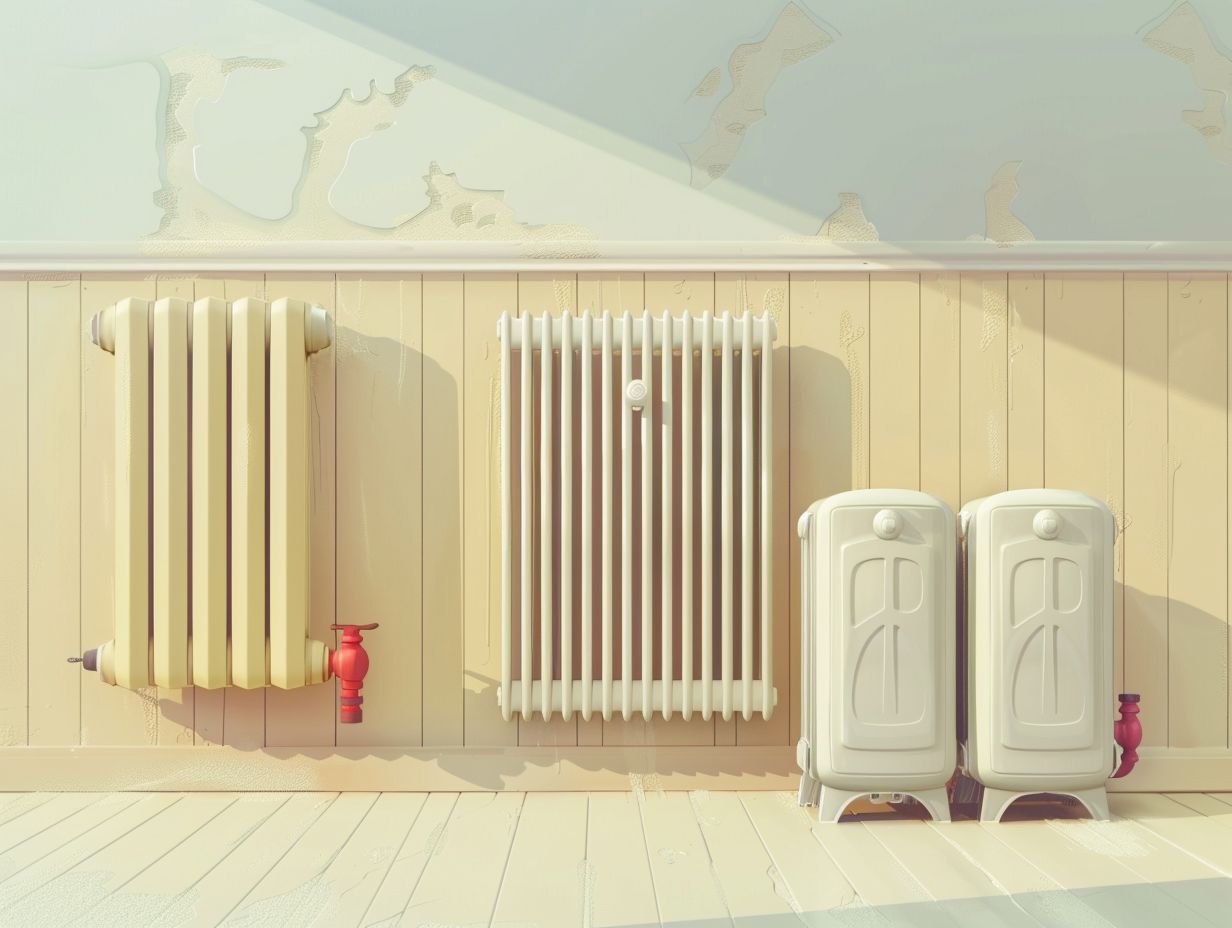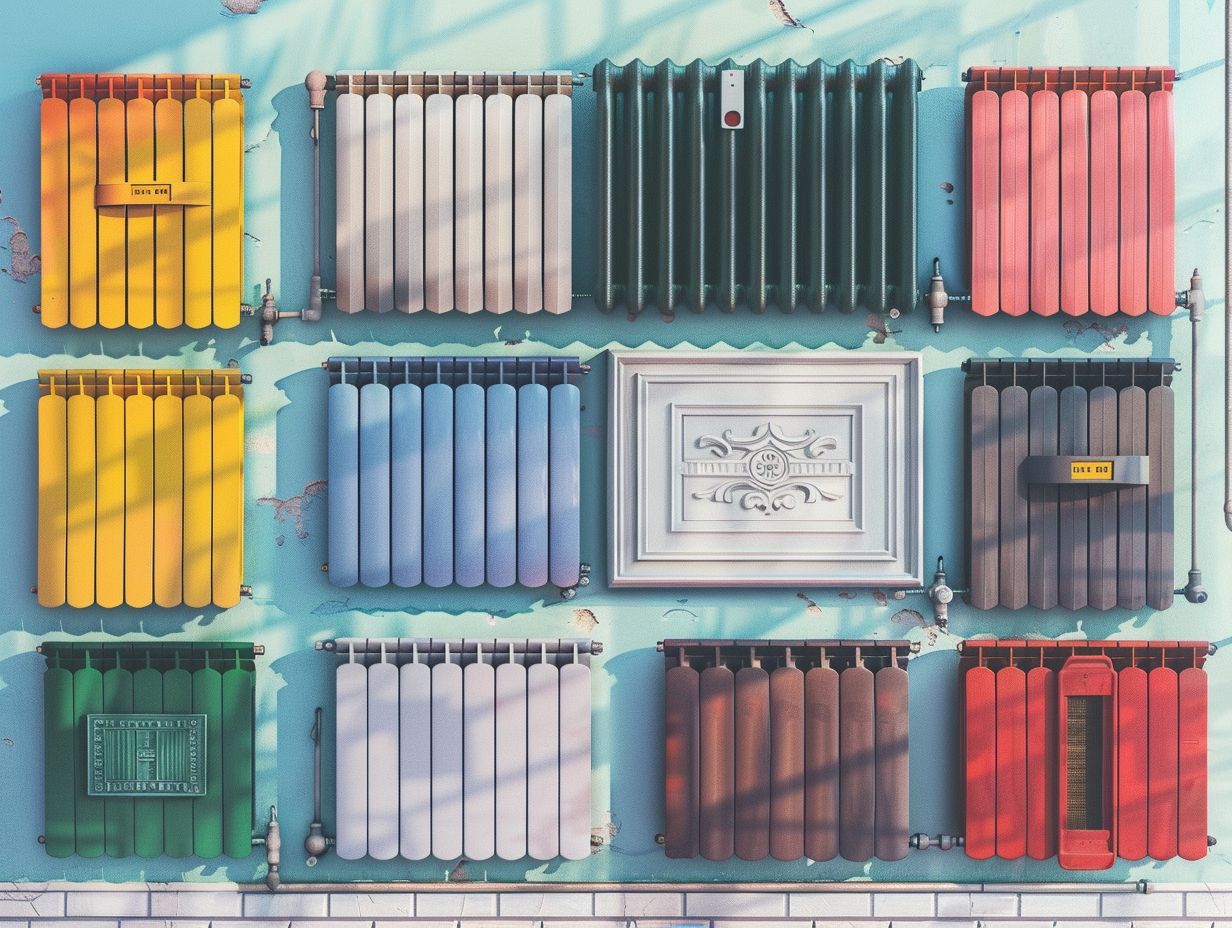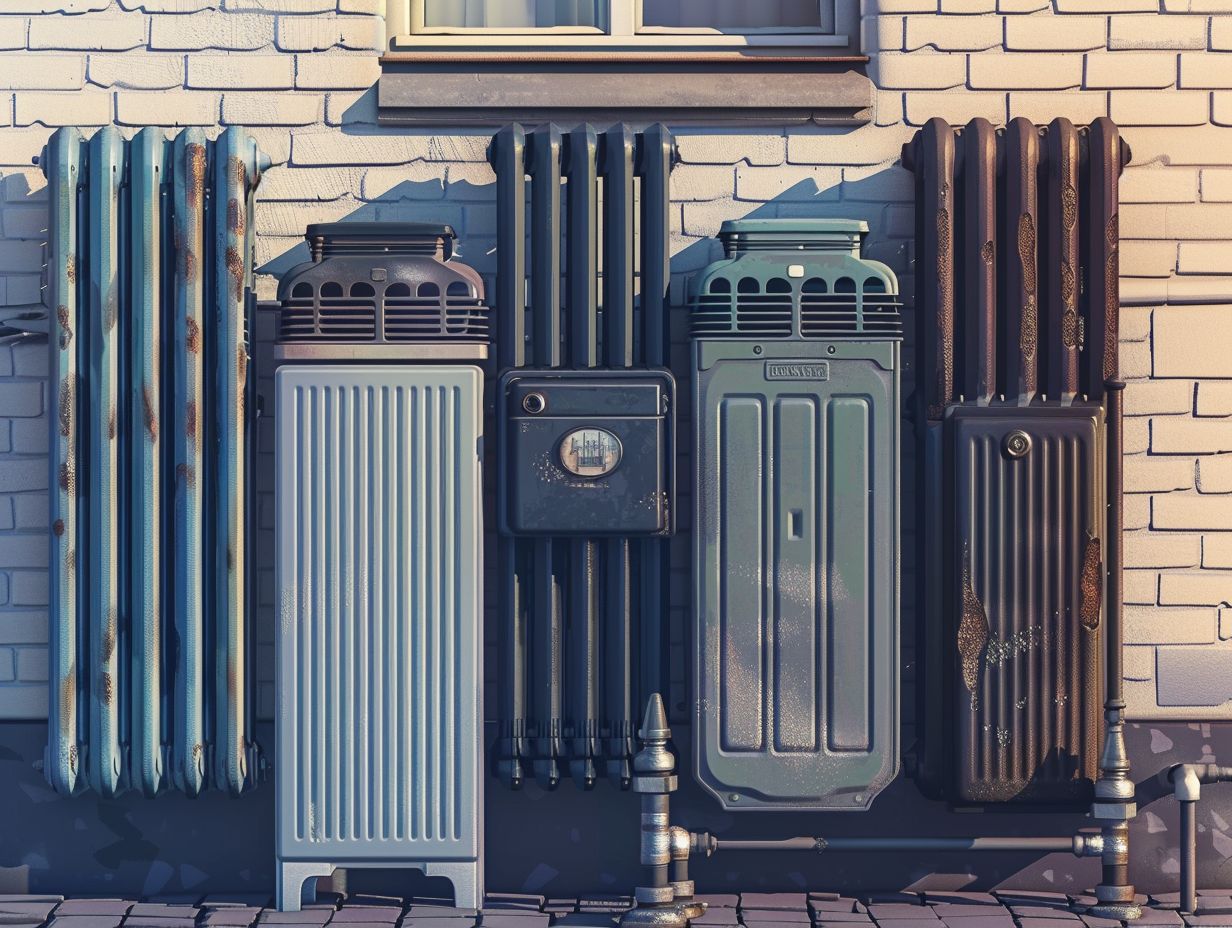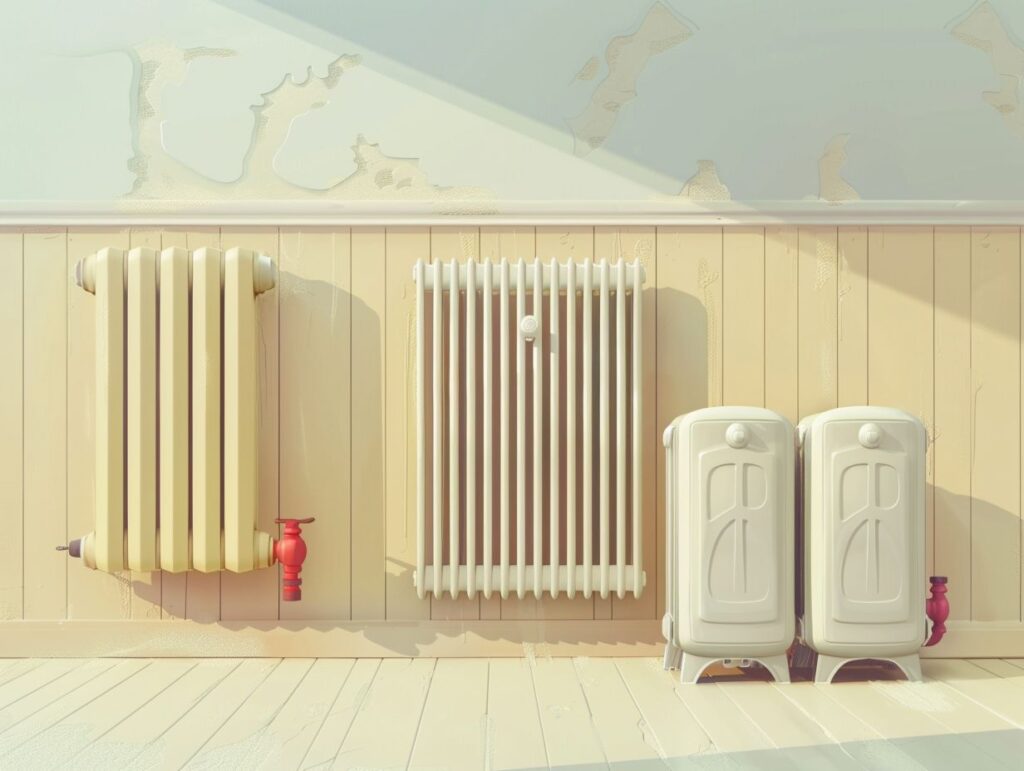Are you interested in learning about the different types of radiators suitable for your home?
Explore the features, advantages, and disadvantages of Type 11 radiators. These radiators are recognised for their efficiency and cost-saving advantages, although they do have some limitations to consider.
We will also cover the key factors to take into account when selecting the ideal radiator for your requirements and offer maintenance advice to ensure your Type 11 radiator remains in optimal condition.
Keep an eye out for all the insights and recommendations you require!
Key Takeaways:

- Type 11 radiators have a unique design that allows for efficient heat output and cost savings.
- While type 11 radiators may have limitations, they are a popular and reliable choice for many households.
- Consider factors like room size and heating needs when choosing the right type of radiator for your home.
Overview of Radiator Types
Various types of radiators are available to meet different heating requirements and aesthetic preferences. Whether you are seeking designer radiators to enhance your decor or efficient central heating systems for multiple rooms, understanding the available options can assist you in making an informed decision for your space.
For example, column radiators provide a timeless appearance and exceptional heating performance, making them an excellent choice for traditional interior designs. In contrast, flat panel radiators offer a sleek and modern look, making them a suitable fit for contemporary settings.
While towel radiators are commonly associated with bathrooms, they can also provide warmth in kitchens or hallways, serving a dual purpose of heating and drying towels. Cast iron radiators are valued for their durability and heat retention capabilities, making them ideal for historic buildings or large spaces requiring consistent warmth.
Understanding Different Types of Radiators
When exploring the world of radiators, you will encounter various types such as Type 22, Type 11, panel radiators, and towel radiators. These radiators differ in design, heat output, and suitability for different room sizes and heating requirements.
Type 22 radiators, for example, are known for their double panel and double convector design, providing high heat output capacity which makes them suitable for larger rooms requiring more warmth.
On the other hand, Type 11 radiators have a single panel and a single convector, offering lower heat output, making them ideal for smaller spaces or rooms that require less heating.
Panel radiators, with their flat panels, are versatile and work well in various room sizes, while towel radiators are specifically designed for bathrooms, offering both heating functionality and towel drying capabilities.
Features of Type 11 Radiators
Type 11 radiators are recognised for their sleek design and effective heat dispersion. These radiators are equipped with a single panel and a single convection fin, making them particularly suitable for smaller rooms or areas with limited space.
Their compact dimensions enable them to be positioned neatly against walls, optimising the use of available space. Despite their small size, Type 11 radiators deliver impressive heat output, ensuring that rooms remain comfortably warm.
The uncomplicated design makes them easy to install and maintain, providing homeowners with a straightforward heating solution. Additionally, their stylish appearance adds a contemporary element to any room, effortlessly complementing a variety of interior design styles.
Heat Output and Design
The heat output of Type 11 radiators is influenced by factors such as the size of the panel, BTU rating, and the efficiency of convection fins. The design of these radiators plays a crucial role in their performance and visual appeal in a room setting.
When considering the BTU calculations for Type 11 radiators, it is essential to account for the specific requirements of the room to ensure optimal heating efficiency. Convection fin technology further enhances the heat distribution, allowing for a more consistent temperature throughout the space.
The aesthetic aspect of radiator design should not be underestimated, as it can significantly impact the overall look and feel of a room. Choosing a radiator that complements the room’s decor can enhance the space’s ambiance while still delivering the necessary heat output.
Advantages of Type 11 Radiators

Type 11 radiators offer you several advantages, including efficient heat distribution, a space-saving design, and cost-effectiveness. These radiators are a popular choice for homeowners seeking reliable heating solutions without sacrificing style. Their slimline construction makes them ideal for rooms where space is limited, allowing for easy installation in tight spots.
With their efficient heat distribution capabilities, Type 11 radiators ensure that every corner of your room receives consistent warmth, creating a comfortable living environment. Their affordability makes them a practical choice for those looking to invest in a long-lasting heating solution without exceeding their budget.
Efficiency and Cost Savings
The efficiency of Type 11 radiators is evident in their capacity to rapidly heat a space while conserving energy. This effectiveness not only improves comfort but also leads to substantial savings on heating expenses, rendering Type 11 radiators a pragmatic option for numerous households.
The heat retention properties of these radiators ensure that once a room reaches the desired temperature, the radiator continues to release heat, sustaining warmth for extended durations without the necessity for constant energy consumption.
This attribute not only offers convenience in sustaining a pleasant environment but also aids in diminishing overall energy usage, subsequently reducing utility expenditures.
By uniformly dispersing heat, Type 11 radiators eliminate cold areas and optimise warmth throughout the room, establishing a cosy and inviting ambiance while operating at peak energy efficiency levels.
Disadvantages of Type 11 Radiators
Despite their efficiency, Type 11 radiators may have limitations such as lower heat output compared to other types, especially in larger rooms. The simplistic design of Type 11 radiators may not suit all interior aesthetics.
It is essential to consider the heating requirements of your space before opting for Type 11 radiators as they may struggle to adequately heat larger rooms, leading to uneven temperature distribution.
The limited surface area of Type 11 radiators can also hinder their ability to provide consistent warmth in spaces with high ceilings. Due to their basic design, these radiators may not blend seamlessly with modern or elaborate interior decor schemes, potentially clashing with the overall look of the room.
Potential Limitations and Drawbacks
When considering Type 11 radiators, you need to be aware of their potential limitations and drawbacks. These may include inadequate heating capacity for larger rooms, limited design options, and the need for supplementary heating solutions in certain scenarios.
For instance, Type 11 radiators, due to their basic structure of a single panel and a single convector, may struggle to provide sufficient heat output for areas with high heat loss or those requiring fast heating.
The traditional design of Type 11 radiators can limit aesthetic choices, making it challenging to complement various interior styles. This can pose a challenge for homeowners or designers looking to integrate heating solutions seamlessly into their spaces without compromising visual appeal.
Choosing the Right Radiator for Your Needs
When selecting the ideal radiator for your needs, consider factors such as room size, heating preferences, and design aesthetics. By evaluating these aspects alongside the specific benefits of radiator types like Type 11, you can make an informed decision for your space.
Taking into account the dimensions of the room where the radiator will be installed is crucial to ensure optimal heating efficiency. Larger rooms may require radiators with higher heat outputs or multiple units for balanced warmth distribution. On the other hand, smaller spaces can benefit from compact radiators that provide sufficient heat without overwhelming the room visually.
Assessing your heating requirements, whether you need a radiator for primary heating or supplementary warmth, will help you narrow down the options available in the market.
Factors to Consider

When selecting a radiator, you should consider factors such as heat output capacity, room size, design compatibility, and energy efficiency. Understanding these considerations can assist you in narrowing down your options and choosing the most appropriate radiator for your heating requirements.
Heat output capacity is a critical factor in ensuring that your radiator effectively heats the room without straining the heating system. It is important to match the heat output of the radiator with the size of the room to achieve optimal heating results.
Taking the design of the radiator into account is essential for achieving a unified appearance in your space. Coordinating the radiator’s style with the overall decor enhances the room’s aesthetics.
Energy efficiency is another key aspect to bear in mind, as it not only lowers energy expenses but also contributes to sustainability.
Maintenance and Care for Type 11 Radiators
To ensure the longevity and optimal performance of your Type 11 radiator, regular maintenance and care are vital. Simple practices like bleeding the radiator, cleaning fins, and checking for leaks can contribute significantly to maintaining the efficiency of your heating system.
Regularly bleeding your radiator is essential to release trapped air pockets that could impede its performance. Cleaning the fins of the radiator is crucial for maximising heat transfer efficiency.
It is important to inspect the valves and connections for any leaks or corrosion to prevent potential water damage and ensure smooth operation. Scheduling professional maintenance services annually can help in early identification of any underlying issues and in extending the lifespan of your Type 11 radiator.
Tips for Keeping Your Radiator in Good Condition
To maintain your radiator in good condition, it is important to perform regular checks, clean it, and ensure proper heat circulation. By following simple tips such as bleeding the radiator, dusting the fins, and promptly addressing any leaks, you can prolong the lifespan and enhance the efficiency of your heating system.
Bleeding your radiator is a critical step in releasing trapped air that may obstruct heat distribution. To accomplish this, you should locate the bleed valve, typically situated at the top of the radiator, and use a radiator key to slowly release any air.
Regularly dusting the radiator fins is essential for optimising heat transfer by preventing dust accumulation. Furthermore, it is important to be vigilant for any leaks and address them promptly to prevent water damage to your system and maintain its overall efficiency.
Final Thoughts and Recommendations
Understanding the diverse options in radiator types and selecting the right fit for your space can enhance both the comfort and visual appeal of your rooms. Whether you opt for Type 11 radiators for their efficiency or explore designer options for a stylish upgrade, prioritising heating solutions tailored to your needs is key.
The choice of radiators goes beyond just functionality; it also significantly impacts the ambiance of your living or working environment. For those seeking a seamless blend of form and function, vertical radiators can be an excellent space-saving and aesthetically pleasing option.
On the other hand, traditional column radiators offer a classic touch that complements period properties beautifully. By aligning your personal taste with the heating requirements of each room, you can create a harmonious and cosy atmosphere throughout your home.
Frequently Asked Questions
How do Type 11 radiators differ from other types?
Type 11 radiators differ from other types such as Type 21 and Type 22 radiators in terms of their heat output. Type 11 radiators have a lower heat output compared to Type 21 and Type 22 radiators, making them more suitable for smaller rooms or spaces.
Do Type 11 radiators require a specific type of heating system?
No, Type 11 radiators can be used with any type of central heating system as long as they are compatible with the appropriate valves and thermostats. However, it is important to consider the heat output of the radiator and the heating requirements of the room before installation.
Are Type 11 radiators more energy-efficient than other types?
Not necessarily. The energy efficiency of a radiator depends on various factors such as the type of heating system, insulation of the room, and the size and placement of the radiator. Type 11 radiators may be more energy-efficient for smaller rooms, but larger rooms may require a higher heat output from a Type 21 or Type 22 radiator.
Can Type 11 radiators be used for both heating and cooling?
Yes, Type 11 radiators can be used for both heating and cooling purposes. They can be connected to a central heating system for heating and can also be connected to a heat pump system for cooling. However, the heat output of the radiator may need to be adjusted for optimal cooling performance.
Do Type 11 radiators have any specific maintenance requirements?
No, Type 11 radiators do not have any specific maintenance requirements. However, like any other radiator, they may require occasional cleaning and bleeding to ensure efficient heat distribution. It is also important to check for any leaks or damage regularly.

